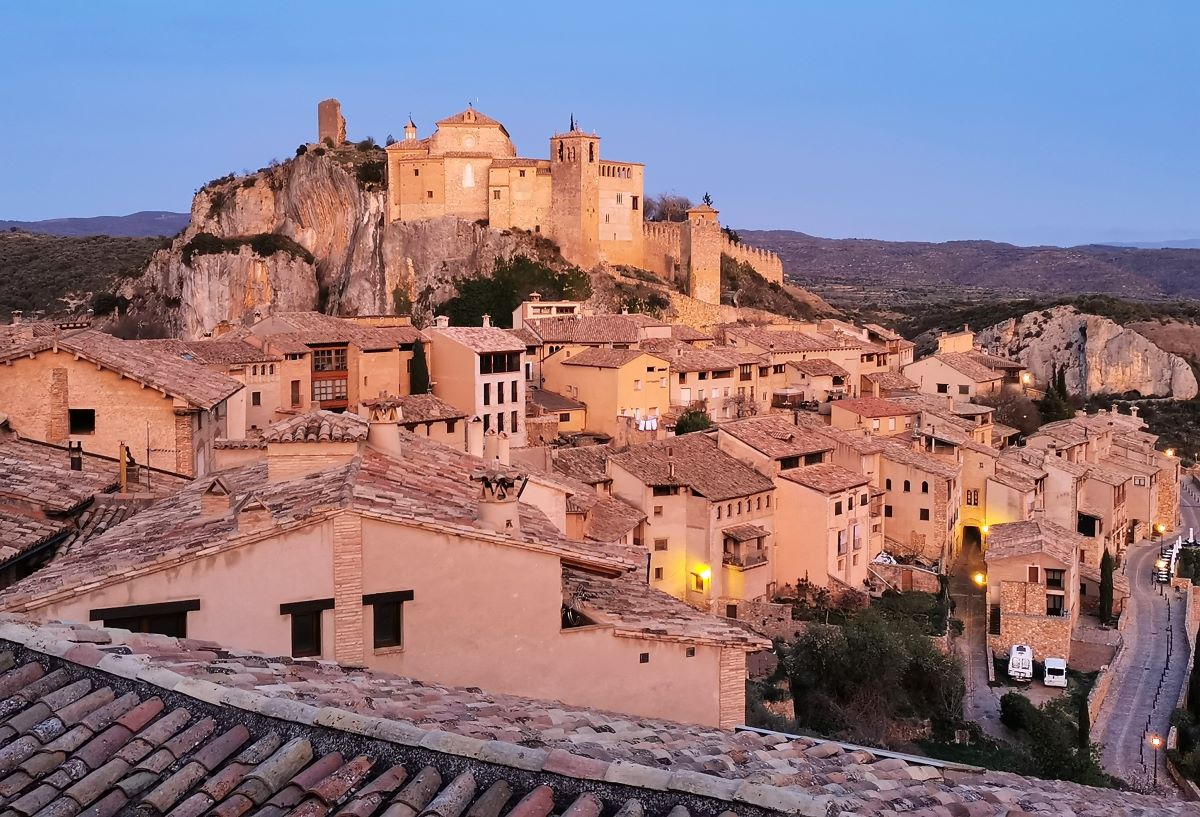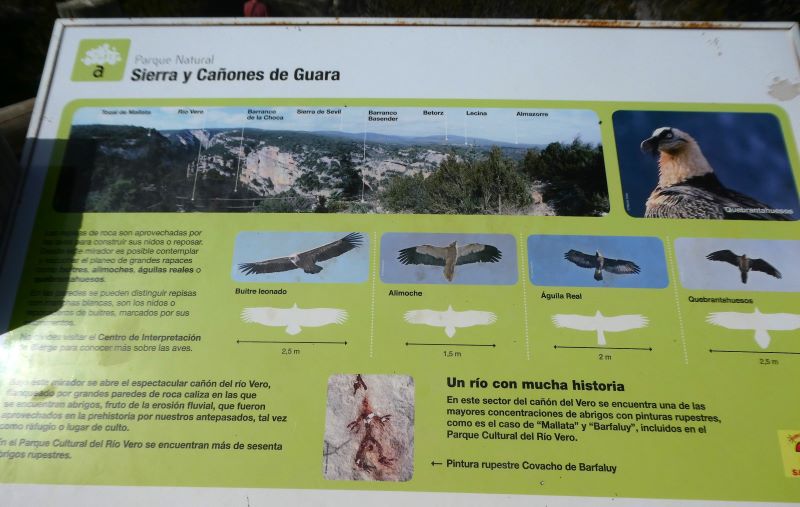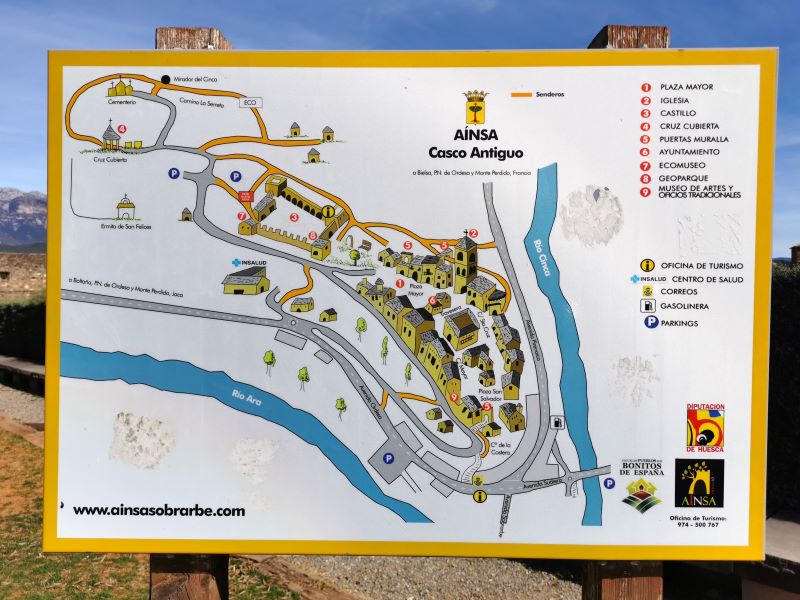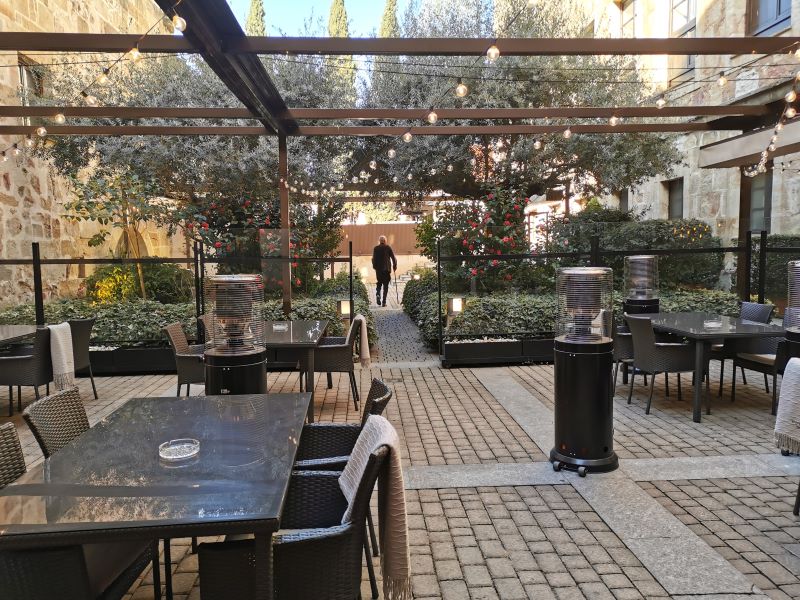Geographically: Where are we in this story?


Dont forget to click on the photo groups to open fully and enjoy the beauty of this stunning region!!
Leaving Barcelona and driving to the Province of Aragon
Picking up our hire car and finding the route out of Barcelona turned out to be fun and quite easy. Once in the open country our minds left Barcelona behind and turned towards the pretty village of Alquézar in the Province of Aragon in the foothills of the Spanish Pyrenees.
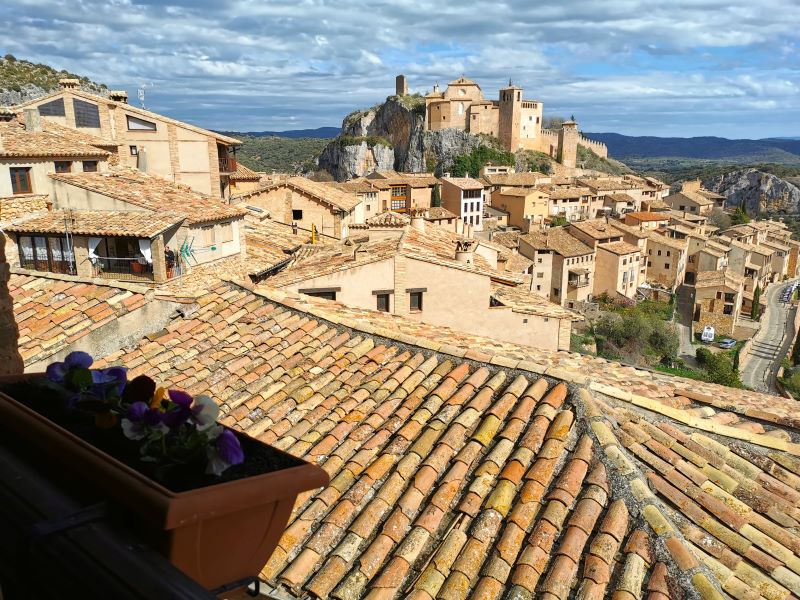






Alquézar; ancient and beautiful
We had done our research and had decided on Alquézar for our stay due to the natural beauty of the area, the history, and the location. As we approached the town we could see the castle dominating the skyline. This medieval collegiate castle was built in the 9th century by the Arabic military. We booked into our accommodation and set out to find a restaurant for dinner. The town is strewn with quality restaurants; however, being early season they were not all open. Nonetheless, we still enjoyed the seasonal food of the region.







Beginning explorations of the region of Aragon
To make the most of our time in this mountainous region, Manfred had planned our day’s explorations in various directions; while keeping open to possibilities we might happen upon along the way. The weather forecast was not so good and, as predicted, it rained! That said, it was the only rain we had the entire time we were in Spain and did not deter us from making our way to our first destination, Rodellar—the highest village in the region. The route was pretty and, as it was early spring, there were blossom trees in various stages of flowering, along with olive groves and stands of pine trees. Leaving the farmland and entering the higher mountainous region we passed through villages and climbed up the narrow winding roads towards our destination. Rodellar is a small village set in the cradle of a mountain with a grand population of 54.

Sierra de Guara National Park: Rodellar
Set above the beautiful Muscan Gorge in the Sierra de Guara National Park, Rodellar and its surrounding areas provide rich adventure sporting activities and outdoor adventures ranging from camping, caving and hiking, biking and canyoning. Climbing is popular, with approximately 800 routes, many of which are steep and include overhanging caves, arches, roofs, tufas, and pinnacles. All routes can be accessed within a short walk from the village. For those who might not want to go all the way to Rodellar, there are about 150 climbing routes in Alquézar itself.
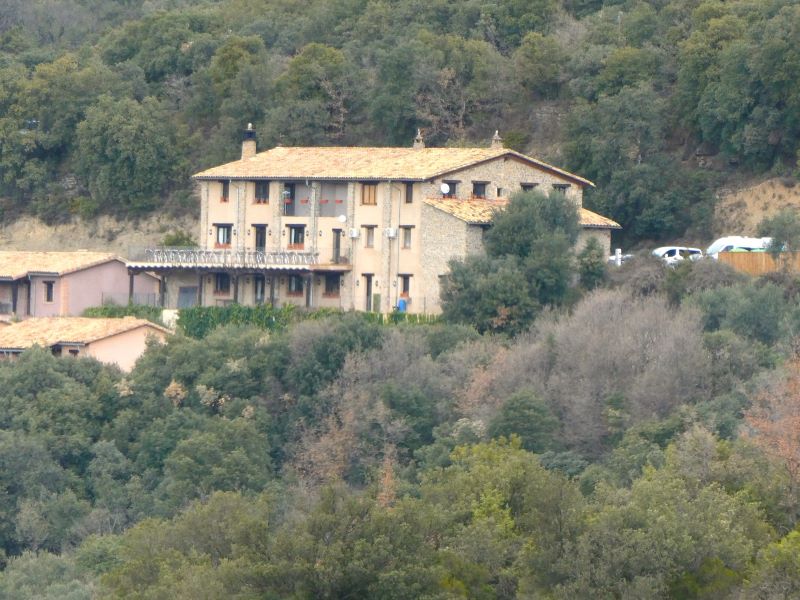

When the weather is sunny and warm, the conditions are ideal for outdoor adventures, although it was not to be for us! Instead, we ate a delicious lunch at a local bar on the edge of the village. As the rain became heavier, and the main street into the village was closed for roading work, there was no further opportunity to explore the small lanes and streets. We abandoned our plans and drove back to Alquézar, enjoying the views from the reverse angle which gave the appearance of a whole new adventure.

Return to Alquézar


Back in Alquézar, after resting (and with no rain!), I went off to explore the village and the collegiate-castle grounds. The gorge houses the Rio Vero where many adventure sports take place such as canyoning, rock climbing, hiking, and abseiling; along with bird watching, where many vultures nest, cruise, feed, and provide entertainment for the ornithologists. I ascended the steps and walkway into the castle grounds and admired the amazing view that spread before me and a long way to the horizon.




At the church entrance I was told that a tour was happening and was asked to wait outside along with other visitors. When our turn came, it was worth the wait. We were shown around the castle and church which houses a huge pipe organ, an amazing altar and side chapels, along with many wall friezes and paintings from the distant past. Be warned, the explanations are all in Spanish; but, if you’re like me and don’t understand the language, there is plenty of opportunity to wander and enjoy the spaces without the commentary, including the bell tower which offers spectacular views.







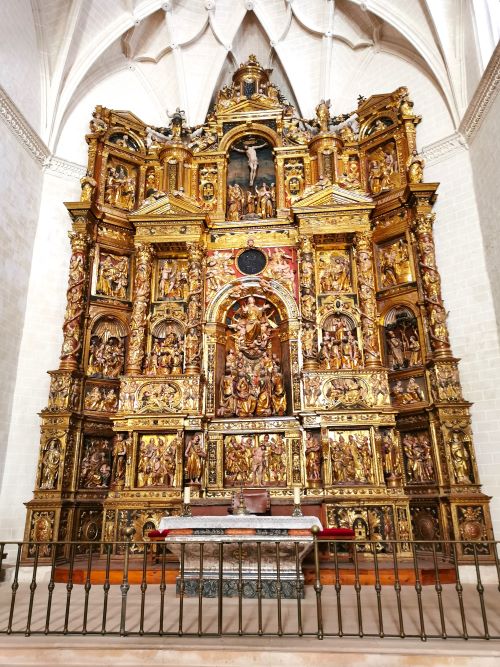










Back in the town, I wandered the labyrinth of lanes, admired the architecture and the cliffs across the valley, and viewed the stepped walkway clinging to the cliffside that takes people down to the floor of the gorge and the Rio Vero far below.



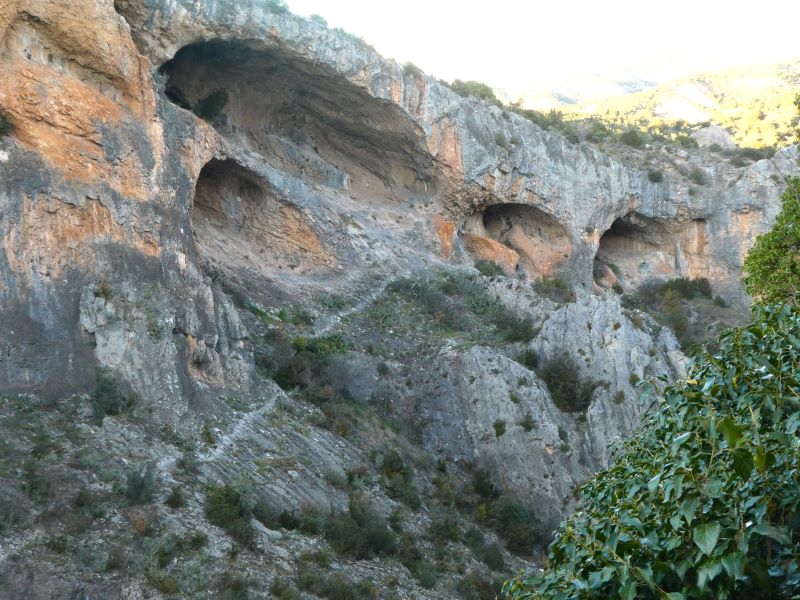
Alquézar has been gifted the title of ‘Site of Historic-Artistic Significance’, and within this unique atmosphere one crosses beneath the archways of old walls and can hear tales of the occupants of this village, about the Moors and Christians, conjuring up a time of long ago.
‘Smile to the Wind’ sculpture


Set outside the historical quarter, a famous contemporary art sculpture and viewing point, ‘Smile to the Wind’, provides a wondrous sight over the whole village, the fortress collegiate church, the opposing stronghold built by the Christian kings, and houses built attached to one another using stone, brick, and clay which integrate seamlessly in the crescent shape of the limestone landscape. A variety of medieval churches dot this village and in the 9th century, the Moors built a castle in this pre-Pyrenees playground using the spelling of ‘al-Qasr’. In the 11th century (1067AD), the Christian king regained power and in 1100AD the new village of Alquézar was designed to adapt to the slopes and varying levels and curves of the land to protect it from extreme climatic changes. This medieval layout remains to the present day. From arched gates and the pillared square, the town rises above the Rio Vero gorge inviting visitors to explore and enjoy the fortress and church of St Maria la Mayor. Built in stages with reforms, revamps, and extensions, this late Gothic style church includes Romanesque, Mudejar, Renaissance, and Baroque architecture. Several restaurants and accommodation options provide for the visitors and I can only imagine that in summer this little village is awash with people.
North to the Pyrenees

The following day we set out towards the Pyrenees—the mountain range forming a natural border between Spain and France. Taking the main highway to a town called Ainsa, which is ‘on the way’’ towards the French border, we took a route onto the Valle de Ordesa Panoramic Road, following it to Sarvisé. With a round trip in mind, we left the main road and made our way back to Ainsa.


This turned out to be a great plan—we saw spectacular scenery and stopped at a highly recommended restaurant, Balcón del Pirineo, in ‘the middle of nowhere’ with great views and an amazing reputation. We were not disappointed and enjoyed a sumptuous meal. They even had a robotic waiter that carried plates of food from the main building to the waiters who then delivered it to the customers, quite a novelty in this remote setting!



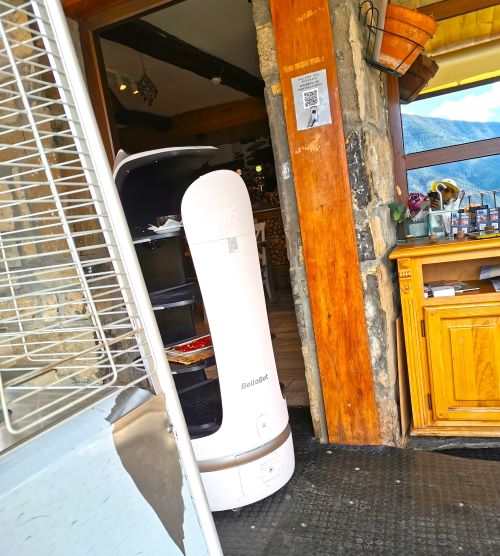


The road was narrow and windy, and took us through very rural pre-Pyrenees where side roads led to remote ski fields, over clifftops and bluffs with sheer-sided rock drops, and into narrow valleys. We stopped many times to ensure we captured the essence of these marvellous mountains and deep ravines. Viewing points at Los Sestrales and Cañón de Añiscola turned our gaze towards the great mountains of the high Pyrenees. On the highest points, we traversed the open fields on the bare tops and drove alongside small but quaint remote villages before the route dropped away to tree-lined twisting roads that eventually brought us once again to the main road.

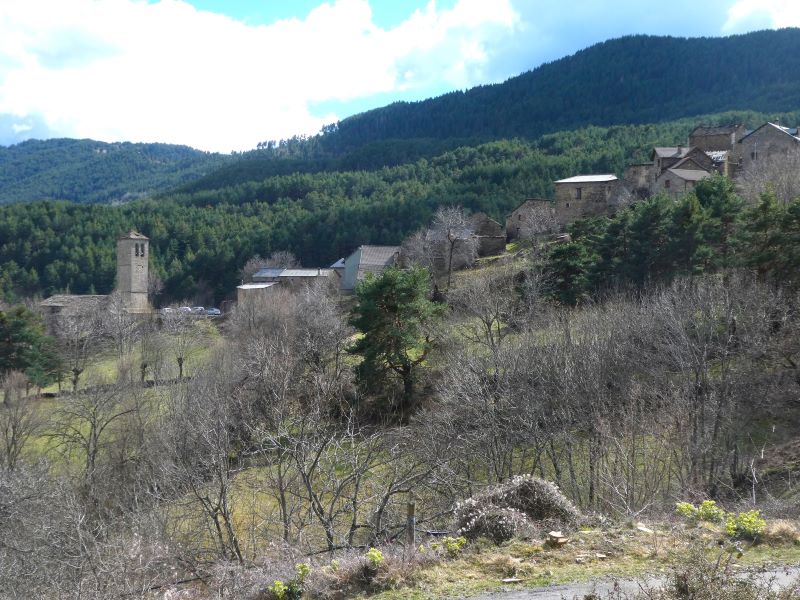





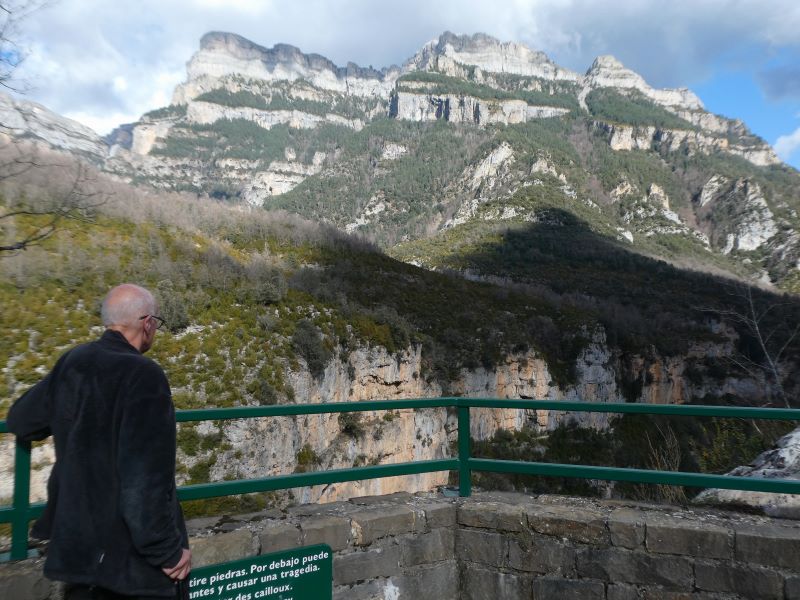
The alternate route home!
Knowing there was another route back to Alquézar through the rural countryside, passing deep ravines with hiking trails, caves with ancient cave drawings, and villages dotted along the way, we made our way back to Boltaña and to the turn off from the main road.
The scenery was stunning, with a new vista at every turn. We planned to return this way the following day and stop to enjoy the views; for now we had decided to visit the old town of Ainsa.
Exploring ‘The Old Town: Ainsa’
Not far after leaving Alquézar we stopped to enjoy the lovely view across a grass field and from this vantage point one gets a real sense of how the town is built into the curve of the mountain.
From here the road took us around the steep sided gullies and over curved bridges that cover ravines whose rushing unseen waters are so far below that when we stopped to look into these massively deep ravines the sound can only be heard as an echo deep within the rocks.

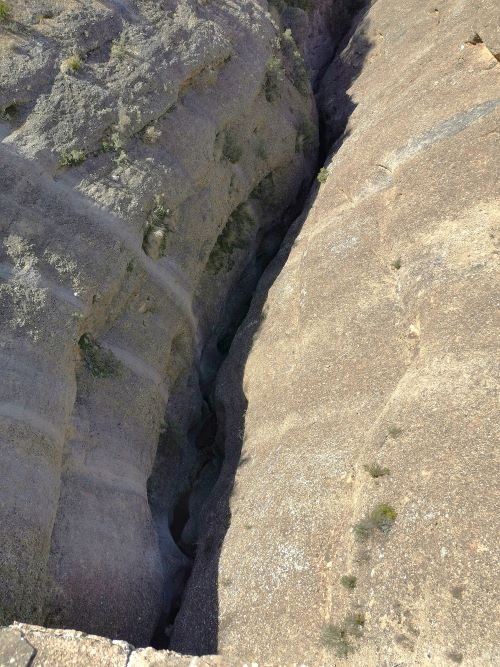

Continuing on our way towards Ainsa, we stopped many times at car park areas where people can freedom camp in their vans. These stopping places were usually located offering views deep into valleys below and to the hills rounded by weather and time far above the canyon floor below. Knowing we could not walk these trails, it was lovely to see others enjoying the prolific choice of available hikes and climbs.


There were no coffee stops along the way and at one stage we hopefully pulled into a small and pretty village but the one restaurant/bar was not yet open for the spring and summer season. We chatted to some British people who have a house there and they informed us that the closest place to get food and coffee was in Ainsa.
Exploring Ainsa
Once there, we made our way to the historic quarter of the village. Ainsa is not a big town, and in this quarter are restaurants, private residences, and public accommodations, along with tourist shops. We arrived in the early mid-afternoon and although several of the restaurants were already closed for siesta time, we managed to find somewhere for lunch before exploring the lanes and byways of this old town.




It was very quiet as the time of year is not the tourist season; however, we were led to believe that the town swells and becomes very lively in the holiday time.
According to a Spanish tourism information website, the old town is a ‘Historic-Artistic’ site and is celebrated as a ‘magnificent example of medieval urban development’. Incorporated into the Kingdom of Aragon in the 11th century, Ainsa’s historic town is formed by a group of houses tightly packed together with the tower of the collegiate church taking centre stage. The castle forms a large area of the town and the centuries-old wall surrounding the historic quarter remains pretty much intact today. The Romanesque church of Santa Maria was built in the early 11th century and added to in the 13th century when the cloister was built.

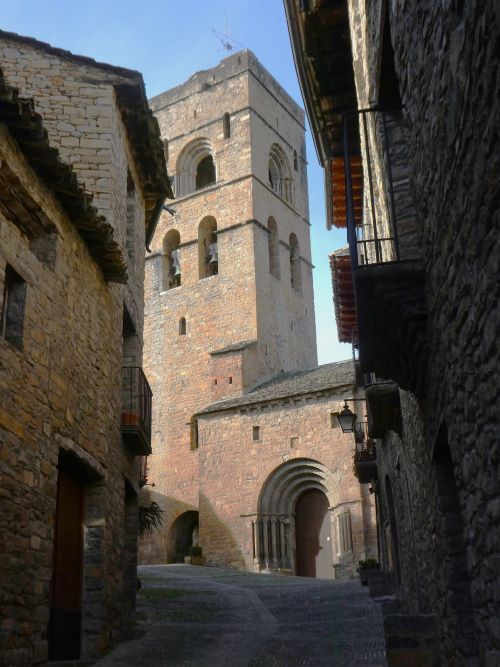










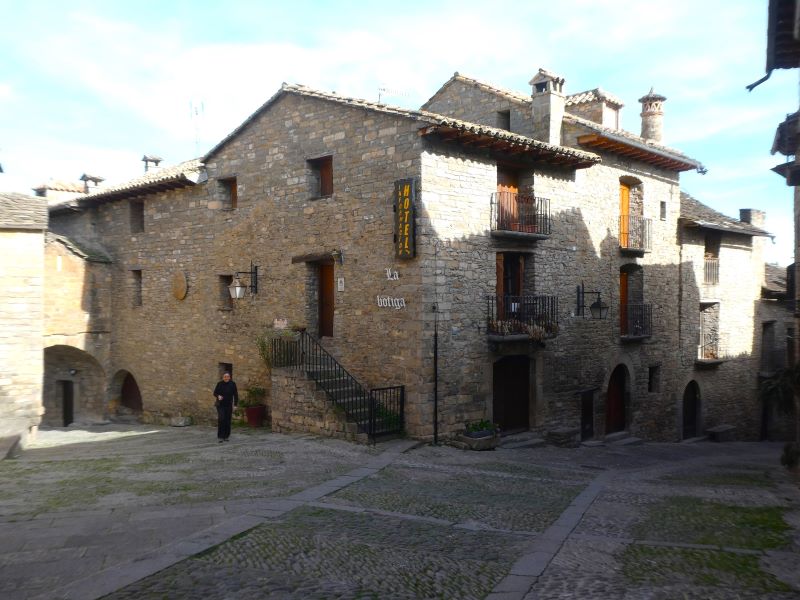
Because the drive from Alquézar to Ainsa was so lovely, we took the same route back to our hotel for our last night in Alquézar which was beautifully lit up with the setting sun. The following morning we explored the hotel gardens and swimming pool before driving towards our next destination of Salamanca.




To Salamanca
We passed by beautiful blossom trees as we left the mountainous region and made our way to the main highway near Huesca and Zaragoza. After struggling to get out of the ring roads around Madrid (navigational equipment is highly recommended!), we finally found the road to Salamanca and arrived in the early evening after what was meant to be a 6-7 hour drive became 10 hours. We drove around the city and found our accommodation near where we had entered the city. Laughing at ourselves, we checked in, before admiring the nighttime views and having a delicious dinner.
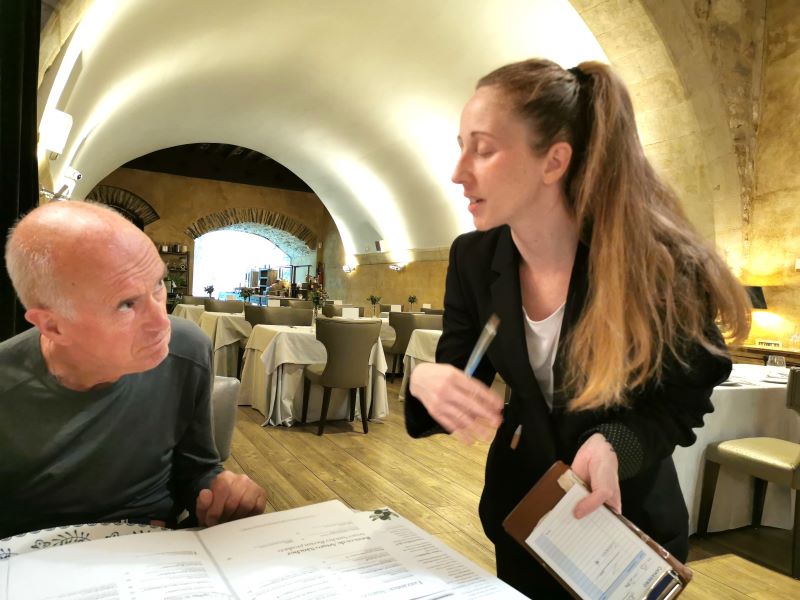

Salamanca is a city famous for its Pre-Roman Celtic history and the ancient university which was founded around the 12th century. The churches in the tightly packed old city are adorned with live storks on every precipice which made for fascinating bird watching from among the blossom trees in the gardens of our hotel which was located right in the heart of the ‘Golden City’.












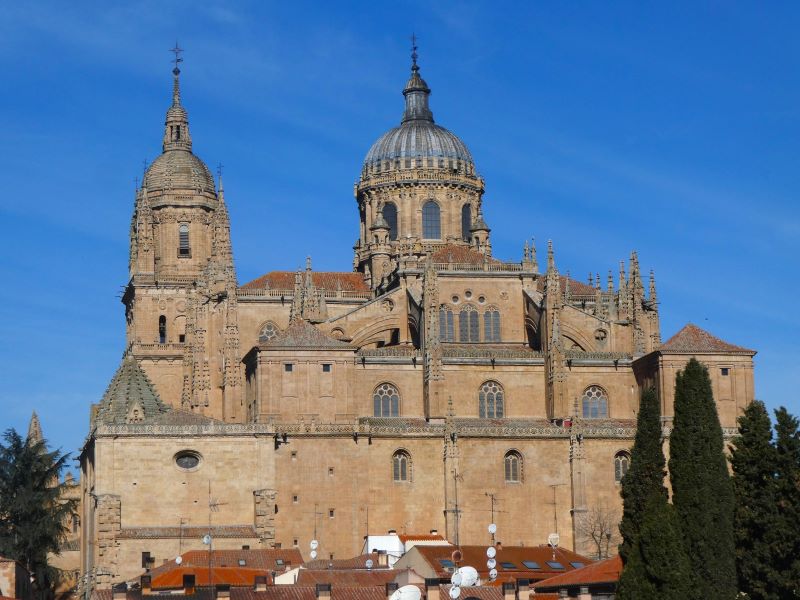


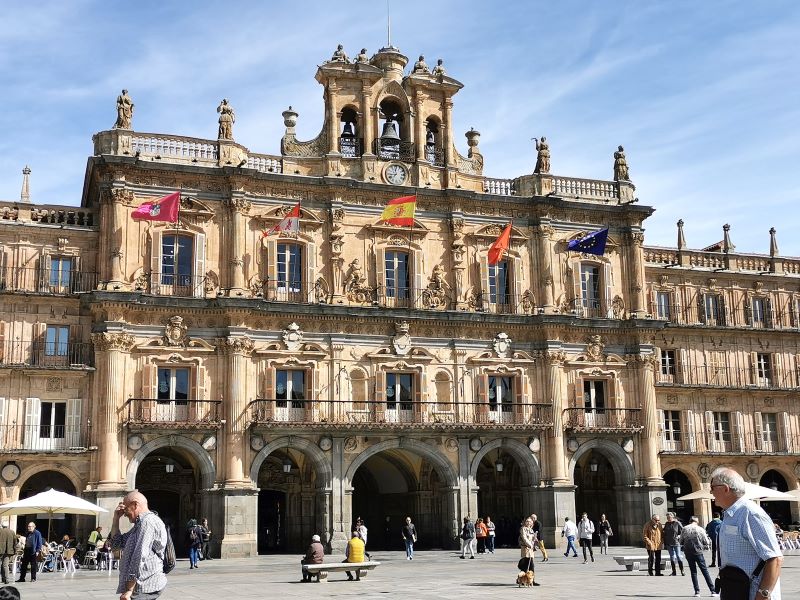
It has gained this title from the golden-coloured sandstone used to build many of the now famous buildings. We wandered the streets admiring the architecture while periodically stopping for coffee.


Leaving Salamanca for the Valle del Jerte
Soon we had to leave this beautiful city and move to our next destination deep in the hills and valleys of the Valle del Jerte (pronounced Vaya de Herta) in Extremadura, staying at a small mountain village called Cuacos de Yuste (pronounced quakas de usta). This area is famous for cherry blossoms, national parks, vultures, eagles and other birds of prey, and amazing scenery. Come along on this journey in the next instalment.
#salamanca #universidadsalamanca #ciudad #nacional #pyrenees #mountains #pirineos #landscape #pirineus #occitanie #mountain #hiking #naturephotography #catalunya #photography #mountainlovers #greatpyrenees #aragon #landscapephotography #alquezar #alquézar #destinationpyrenees #huesca #outdoors #rodellar #ainsa #travel #traveltheworld #worldtraveler #lettheadventurebegin #storks

